글: 앤드류 Andrew Metheven (War Resisters’ International)
번역: 오리 (전쟁없는세상)
전쟁없는세상 주:
전쟁없는세상이 운영하는 비폭력트레이너 네트워크 망치에서는 해마다 트레이너를 위한 트레이닝을 진행합니다. 2018년에는 마찬가지로 비폭력 트레이너 네트워크인 ‘변화의 물결 Turning the Tide’의 트레이너이자, 한국 병역거부운동의 오랜 친구인 ‘전쟁저항자인터네셔널 War Resisters’ International’의 활동가 앤드류를 초청해서 트레이닝을 진행했습니다. 앤드류가 트레이닝을 진행한 후기를 보내주었습니다.
작년 12 월, 나는 전쟁없는세상의 비폭력트레이너 네트워크 <망치>의 초청을 받아 트레이너를 위한 트레이닝을 진행하였는데 그것은 매우 영광스러운 경험이었다. <망치>는 사회운동을 위한 기술을 개발하기 위해 한국 전역의 활동가 단체들을 지원한다. 주말 동안 우리는 캠페인 전략을 개발하고자 하는 그룹을 어떻게 지원할 것인가에 주력해 트레이닝을 진행하였다.
우리는 캠페인 그룹이 보다 전략적으로 사고할 수 있도록 돕는 다양한 도구와 연습활동들을 탐구했다. 이를 위해 우리는 전략을 다음과 같은 몇 가지 주요 요소로 나누었다.
- 문제 분석
- 맥락에 대한 이해
- 구체적 목표(들)
- 명확한 대상 및 청중
- 강력한 메세지
- 원칙
- 분명한 타이밍
- 적절한 전술
그리고 이것을 캠페인의 전략화를 고민하기 위한 틀로 사용하였다. 어떻게 캠페인 그룹들에게 이러한 요소들을 이해시키고 이것을 그들의 전략에 포함시킬 것인가? 이 고민을 해결하기 위해 우리는 우리 스스로 이것을 트레이닝 해보았다. 주말 내내 망치는 캠페인의 비전과 목표를 찾는 툴뿐만 아니라 ‘우리편 찾기’, ‘뉴스 가치가 있습니까?’, ‘나무그리기’, ‘역장분석’과 같은 툴을 이용해 캠페인 전략에 관해 트레이닝을 진행하였다. 그리고 목표를 성취할 수 있도록 하는 전술들을 개발하였다.
우리는 이번 트레이닝을 활동가의 입장에서 참여하기보다는 트레이너로서 우리 활동을 탐구하는 기회로도 삼았다. 참가자들은 경험학습사이클(Experiential Learning Cycle, 트레이닝의 기본 요소로서 참가자의 경험을 활용하는 방식으로 트레이닝 및 워크숍을 설계하는 방법) 배경이론을 살펴보고 아침시간을 이용해 구체적인 트레이닝을 위한 아젠다를 개발하였다.
토론을 시작하는 방법으로 내가 가장 좋아하는 것 중 한 가지는 “침묵의 대화”라는 툴이다. 먼저 전지에 키워드들을 쓴다. 그리고 그 전지를 트레이닝이 진행되는 장소 곳곳에 두면 참가지들이 돌아다니면서 그 키워드에 대한 대답/반응을 그 전지위에 쓰거나 그리는 것이다. 각각의 서술에 답을 할 수도 있고(동의/부동의), 질문을 할 수도 있고 20~30분 가량의 풍부한 대화가 오고갈 수도 있다. 이후에 그룹은 각 전지를 세심히 살펴볼 기회를 갖고 각 “대화”에서 핵심적인 학습이 무엇이었는지 끌어내는 시간을 갖는다. 이 방법은 사람들이 간결하고 구체적이도록 독려하며 많은 사람들의 목소리가 한 번에 “들리게” 될 공간을 만든다.
진행자로서 이 트레이닝은 매우 보람있는 경험이었다. <망치> 네트워크는 매우 따뜻했고 매우 적극적으로 참여했다. 나는 이 경험을 통해 많은 것을 배웠다. 나는 늘 내가 할 수 있는 것보다 더 많은 의제에 내가 적응할 수 있다고 생각했었다. 이번 트레이닝에서는 우리가 함께했던 다른 연습활동들 중 일부를 더 “깊이” 살펴보는 것이 보다 의미가 있었기 때문에 내가 준비한 활동 중 일부를 진행할 필요가 없다는 것을 알았다. 나는 나만큼 <망치> 네트워크 또한 이번 트레이닝이 보람찬 경험이었길 바란다!
Deepening Our Understanding of
Nonviolence Training
Andrew Metheven (War Resisters’ International)
Translation: Jungmin Choi.(World Without War)
In December, I was really honoured to be asked by World Without War’s nonviolence training network to facilitate a Training-for-Trainers session. The network of trainers supports activist organisations across South Korea to develop skills for social action. Over the weekend we focused on supporting groups to plan strategic campaigns.
We explored a variety of different tools and exercises that can help a campaign group think more strategically. We broke strategy down into several key elements:
- Analysis of the problem
- Understanding of a context
- A specific goal/series of goals
- A clear target and audience
- Strong messages
- Principles
- Clear timing
- Relevant tactics
And used this as a framework for our thinking around strategy – how can we help campaign groups we work with understand each of these elements, and then incorporate them into their strategy? We did this by practising exercises ourselves – throughout the weekend, the group worked on campaign strategies themselves, using tools like the spectrum of allies, “is it newsworthy?”, problem trees and forcefield analysis, as well as tools to help identify visions and goals for the campaign, and then develop tactics that will help them move towards achieving their goals.
We also took the opportunity to explore our work as trainers (not as activists). We looked at the theory behind the Experiential Learning Cycle (a method for designing trainings and workshops in a way that uses the experiences of the participants as the building blocks for the training), and participants spent a morning devising their own agenda plans for specific trainings.
One of my favourite tools for opening up discussion is a “silent conversation” – key words are placed on big sheets of paper around the room, and participants are invited to write and draw on them, in response to the key word. They can reply to each others statements, agree/disagree, or ask questions, and over 20-30 minutes a rich dialogue can develop. Afterwards the group has the chance to go through each piece of paper and draw out the key learning from each “conversation”. This method encourages people to be concise and specific, and creates space for lots of peoples voices to be “heard”£ at once.
As a facilitator, it was a very rewarding experience, the group were very warm and participated very actively and I learned a lot from the experience. I always think I can fit more into the agenda than I can, and I found I didn’t need some of the activities I had prepared, because it made more sense to go “deeper” into some of the other exercises we did together. I hope the group found the experience as rewarding as I did!




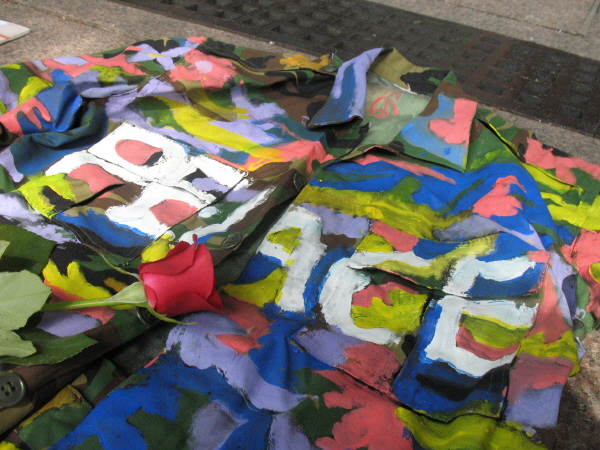
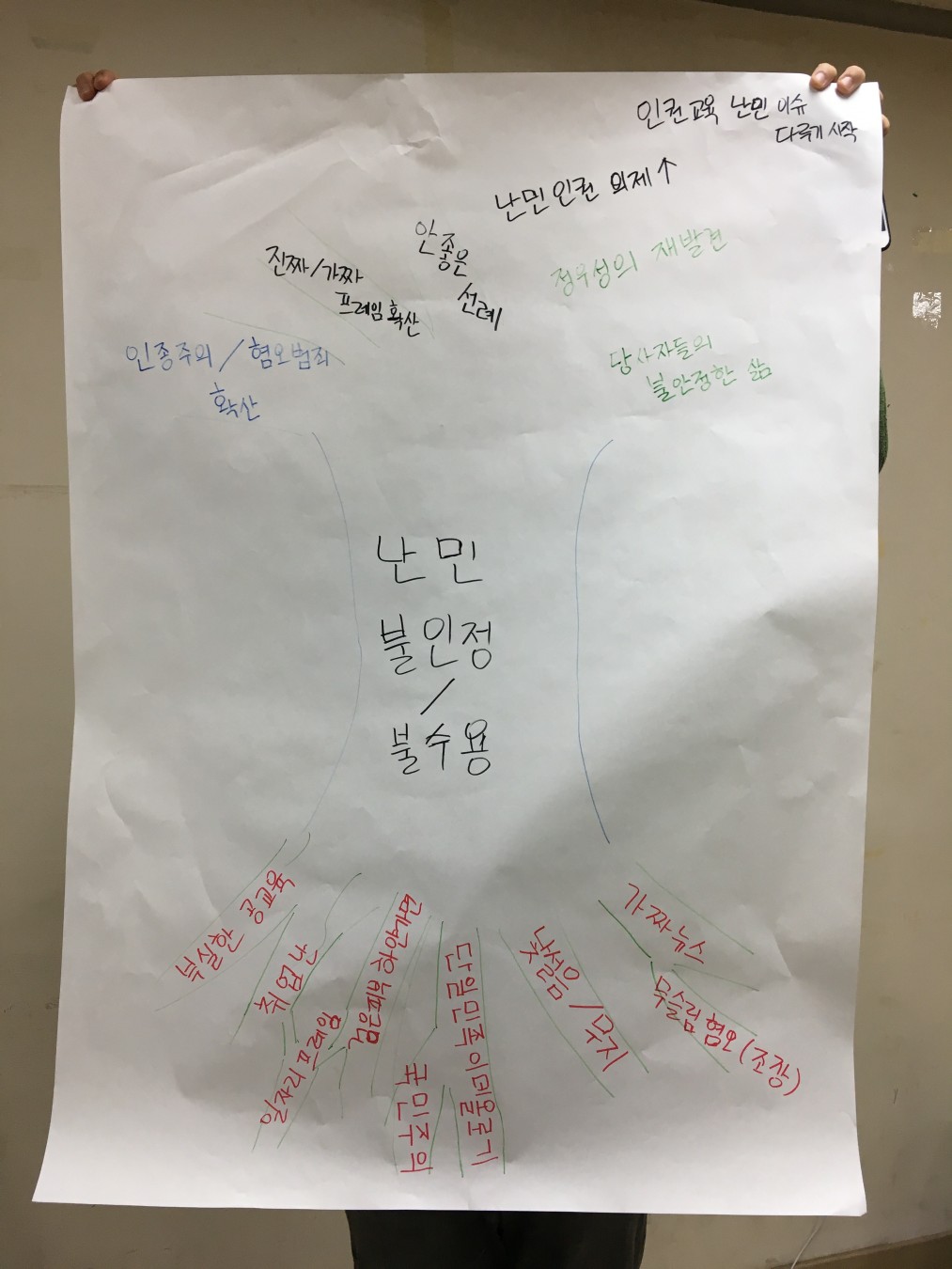
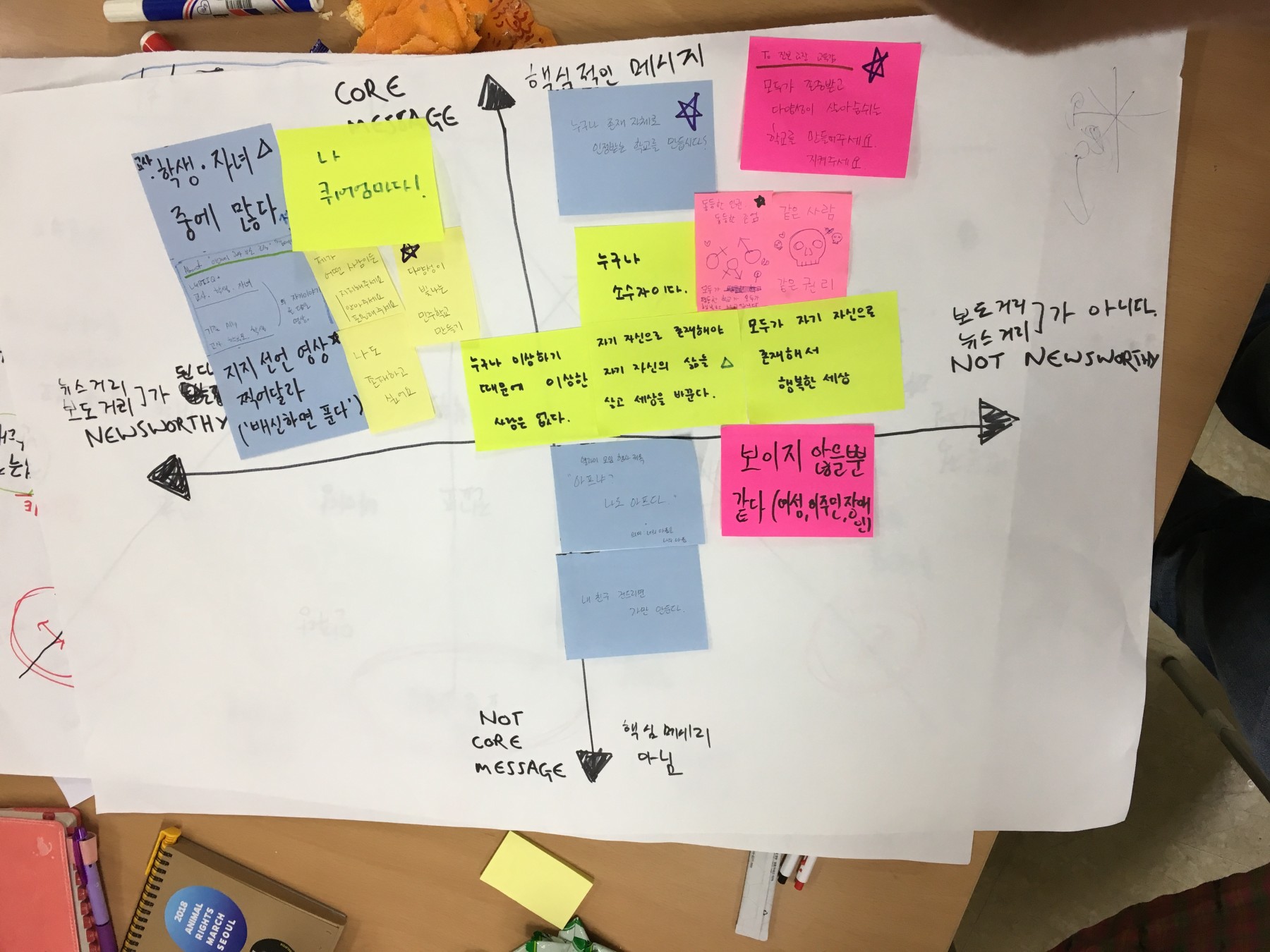
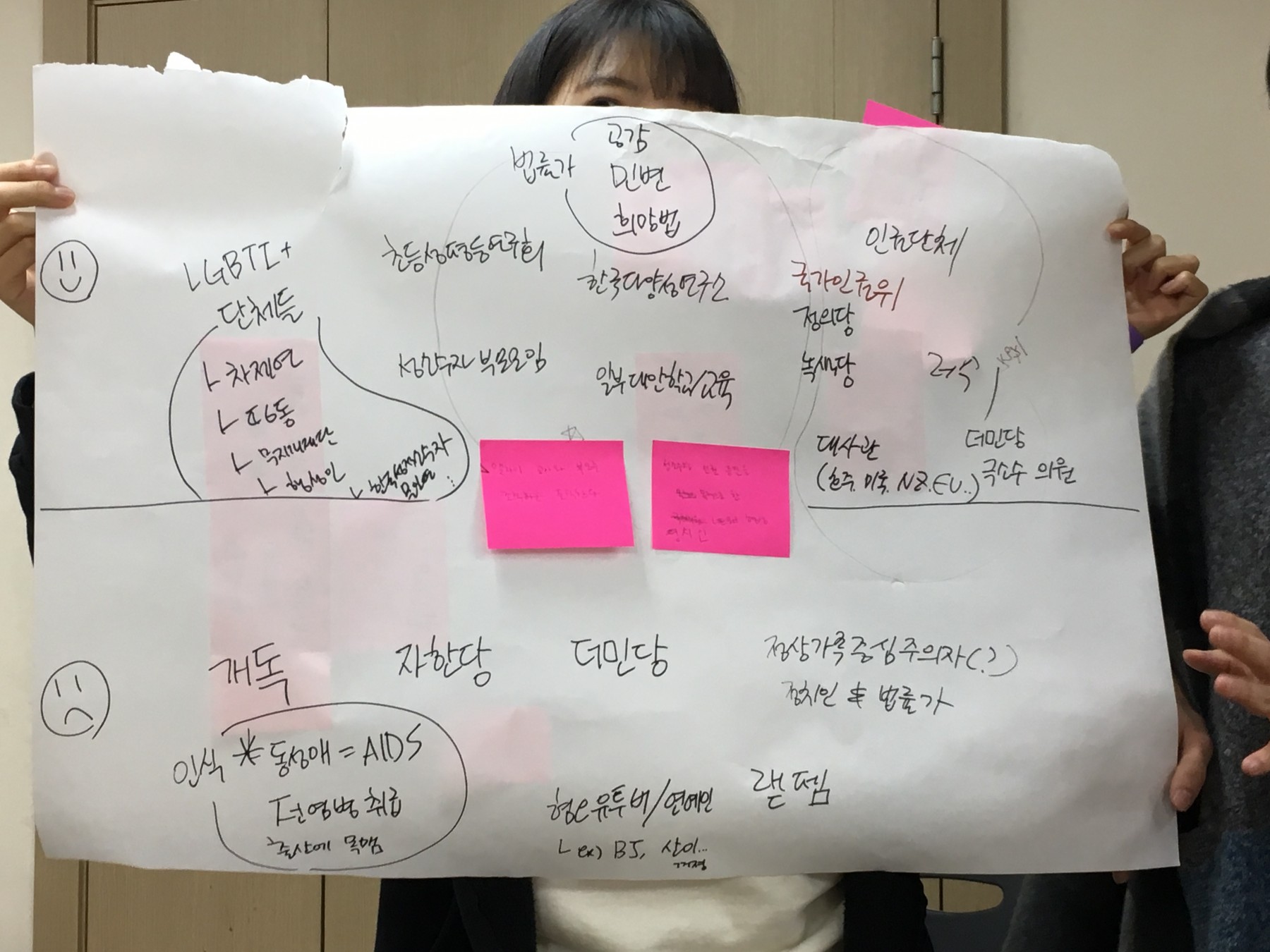
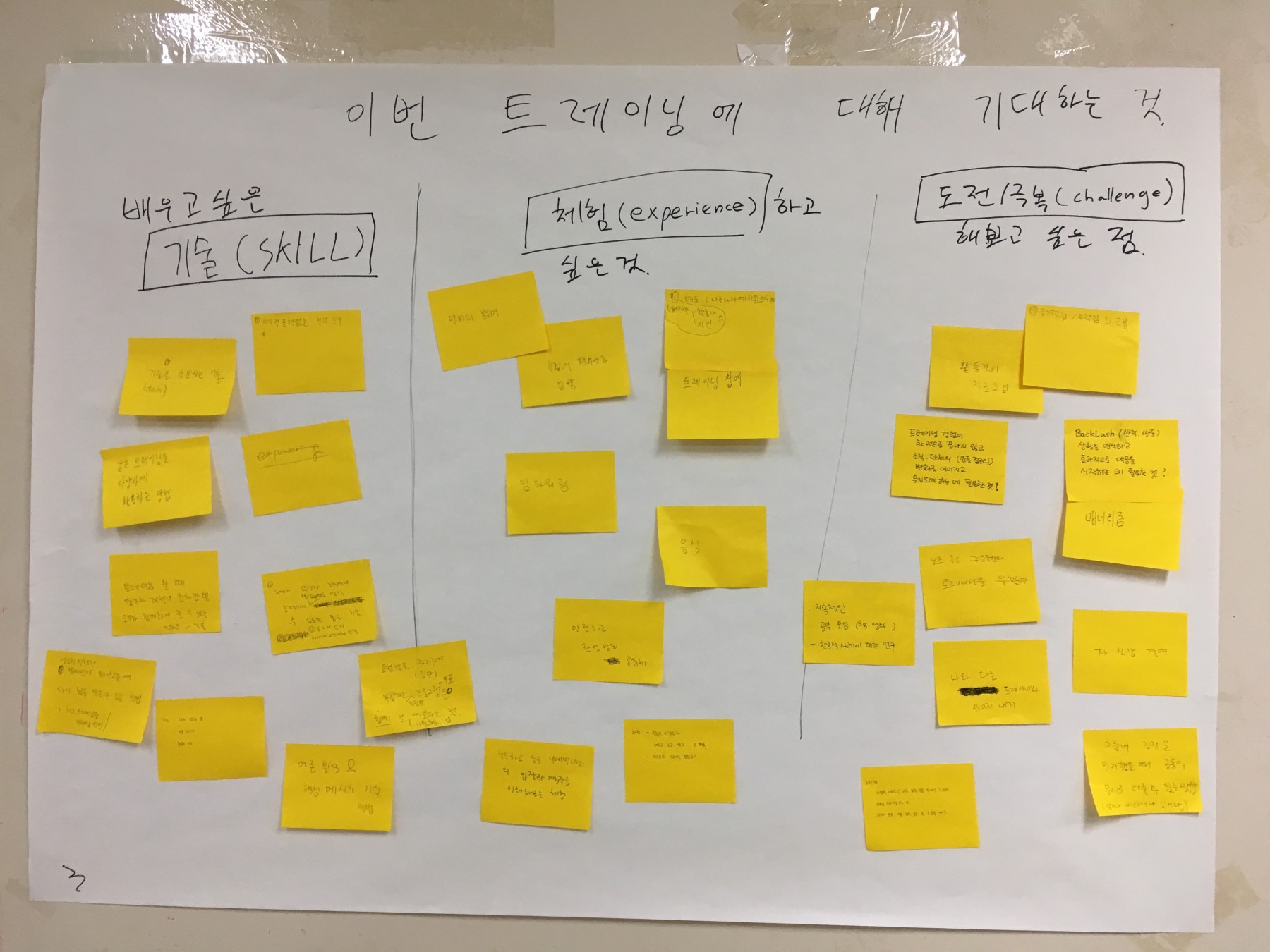
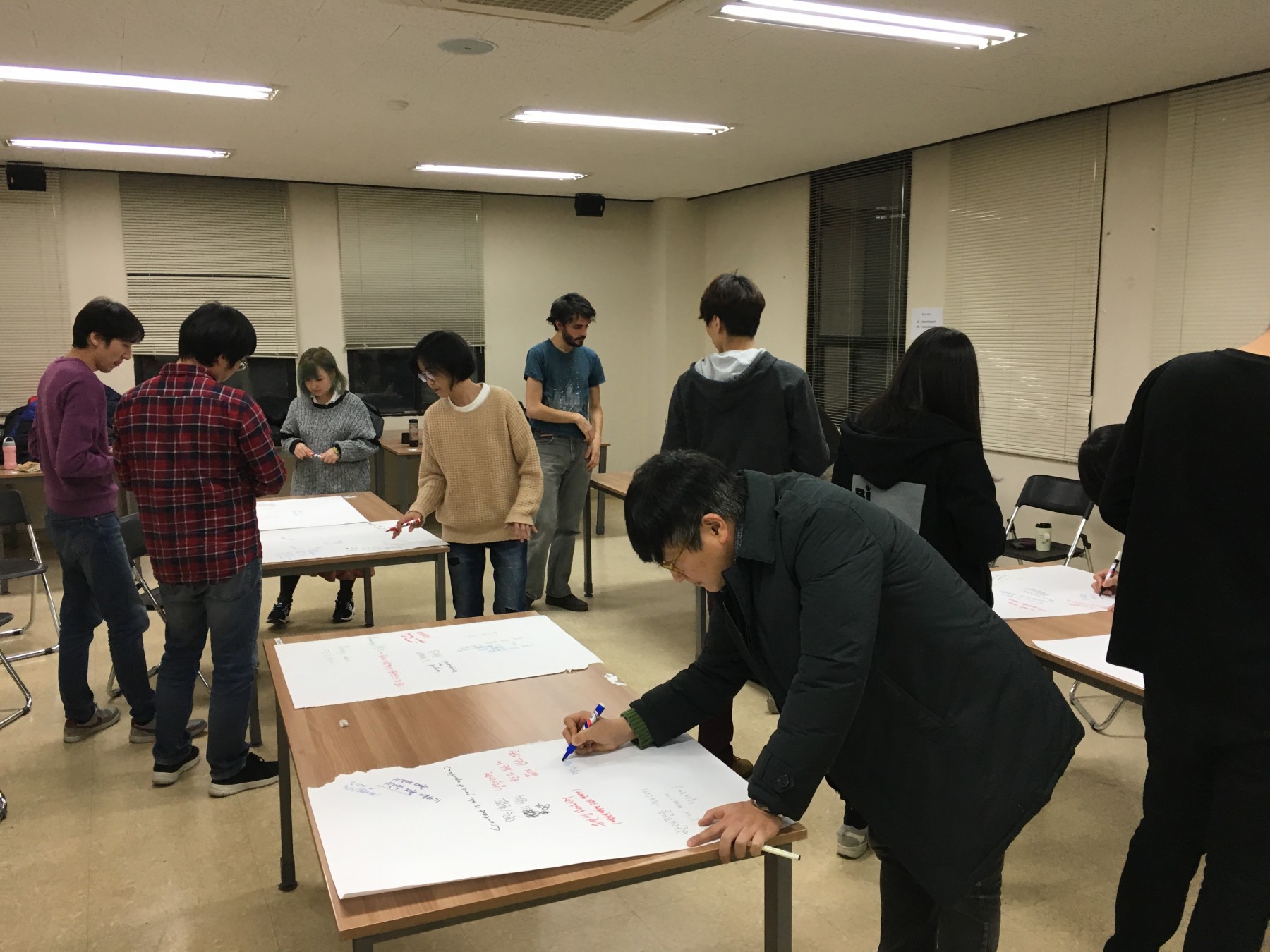

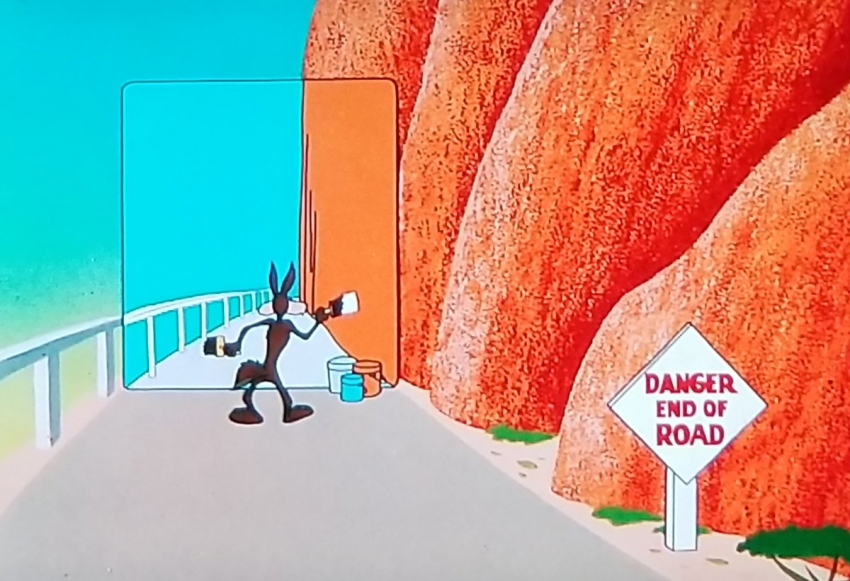
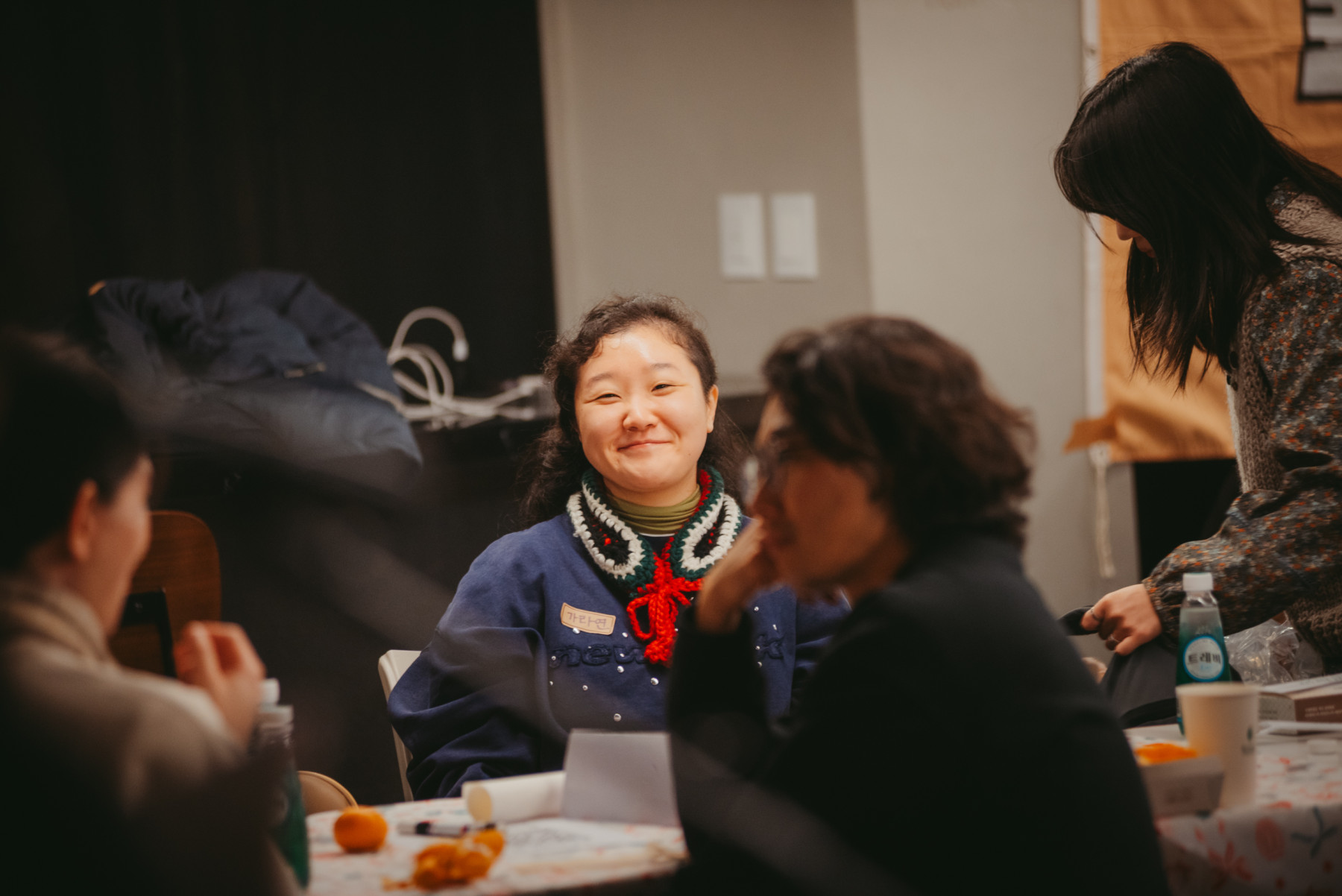
![[보도자료] 전쟁없는세상 2035 NDC 의견 제출](https://withoutwar.org/www_wp/wp-content/uploads/2025/10/20250927_039_DSC_0400-45x45.jpg)
![[보도자료] 이스라엘의 서울 ADEX 참여 금지 촉구 기자회견](https://withoutwar.org/www_wp/wp-content/uploads/2025/09/IMG_6132-45x45.jpg)
![[성명] 양심적 병역 거부자 네티윗 초티팟파이살에 대한 기소를 취하하라](https://withoutwar.org/www_wp/wp-content/uploads/2025/09/screenshot_20250908_165244_instagram-45x45.jpg)
![[성명] 경찰 무기, 인도네시아 청년을 죽였다 – 민주주의를 짓밟는 시위진압 무기 수출을 멈춰라](https://withoutwar.org/www_wp/wp-content/uploads/2025/09/indonesia2-45x45.png)

![[게임과 평화] 낭떠러지를 향해 질주하는 합리적 주체들 – 보드게임 〈리미트〉](https://withoutwar.org/www_wp/wp-content/uploads/2025/12/danger-45x45.jpg)

